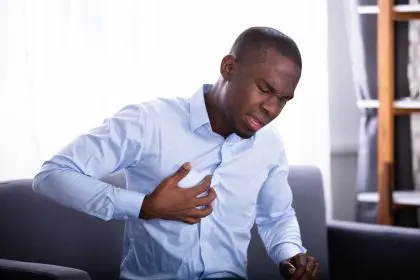
Michelle C. Powell, D.O., M.P.H. is a board-certified osteopathic family physician with over 20 years of experience. Throughout her career, she has established herself as a physician who not only cares about better outcomes but also lifestyle changes to sustain them. She has achieved success by pairing the right medical prescription with appropriate patient education in order to maintain long-term positive outcomes.
In her medical practice, patients most frequently seek Dr. Powell to aid them in addressing hypertension, diabetes and obesity. The common denominator to these conditions is frequently lifestyle choices. Dr. Powell educates and empowers her patients to take control of these choices. Dr. Powell appreciates and encourages the long-term proactive solutions that focus on lifestyle modification to ensure consistent patient participation in healthy living. Dr. Powell relies heavily on patient education when it comes to treating those she serves. She often employs weight loss, nutritional support, and other disease mitigating solutions.
An astute businesswoman as well as an accomplished physician, Dr. Powell is an increasingly popular lecturer and spokesperson. In her speaking engagements she not only analyzes processes, she also challenges thinking. “If you do not change the way you think, you do not change the way you behave,” says Dr. Powell. “External change does not occur before [an] internal change.”
Changing behavior to result in better outcomes is a cornerstone of both her practice as a physician, an owner of a thriving medical care corporation and a lecturer.
Here, the founder and CEO of Powell Health Solutions (PHS), a multi-specialty medical practice with multiple centers throughout Southern Florida, offers insight on maintaining good health after a diabetes diagnosis.
What is your day-to-day like?
My day begins at 5:30 a.m. since my youngest son, Akil, started high school and I drop him to school by 6:40 a.m. I usually make breakfast for my two sons. (I believe it is the most important meal of the day.) and make lunch for Akil. I will then if my time permits, walk in a nearby park for 30 minutes, return home to shower and arrive in the office by 8:30 a.m. On days I do not take my son to school, I will go into the office at 7:30 a.m., review the patient schedule, meet with the staff at 8:15 a.m. for our “morning huddle” and goal setting.
I will then begin seeing patients from 8:30 a.m. until 5 p.m.with a small 15-minute break for a quick lunch. I usually have a business meeting mid-day for 30 to 45 minutes. At the end of the patient care day, I will then put on the CEO hat and work on budgeting, paying bills, reviewing payments from insurance and reviewing a mountain of patient records. I usually go home to make and have dinner with my children at 7 p.m. I will then watch television and complete charts for the day if I am not called to a late-night hospital run. My usual bedtime is [midnight]. It is not my heart’s desire, but it usually is the time I complete charts, refill medications and address any pressing business related issues.
The vision for my medical practice to provide healthcare that will optimize, empower and educate individuals to have the best health possible.
Recent breakthroughs …
A very low blood sugar is no longer necessary to be considered stable and controlled with Diabetes. A target of 150 is now acceptable.
Treatment with long-acting insulin has now extended beyond a once a day dosing to now weekly insulin administration. Early treatment with insulin is now advocated as opposed to waiting for failure of all oral glycemic agent.
The biggest challenge with working with patients with diabetes is nutrition and behavior. Teaching how a food can be nutritionally beneficial but for the diabetic patient it may unfavorably and affect blood sugars. (I.e. brown rice is a more nutritional option for grains and starches but as a starch can elevate your blood sugar.) Teaching diabetic patient the importance of monitoring their blood sugar can be challenging as diabetic patients often due to not like sticking their finger.
I chose medicine and clinical medicine because I wanted to help reduce the health disparities that exist among underserved and minority populations. I chose family medicine in order to impact the whole family and help change generations of poor health practices. I love the variety and challenges offered with being a family physician. I treat patients of all ages, the majority of medical conditions and provide treatment for minor surgical and dermatological conditions. I am never bored and family medicine allows me to create a relationship with people that can influence their total well-being.
What projects are you currently collaborating on with another institution in medicine and or academia?
I am currently working, utilizing my not-for-profit the Powell Health Foundation, to develop a healthcare assistance Service center to provide free medical care, economic services and education for individuals without insurance and in need of additional living assistance. I am partnering with other medical providers in the community who also have a passion for service. The over-all goal of this foundation is to help reduce disparities in health, promote and empower people and assist those who would otherwise not quality or obtain necessary medical and economic services.












